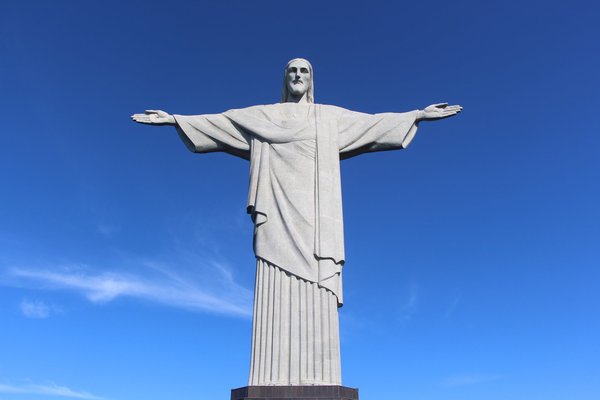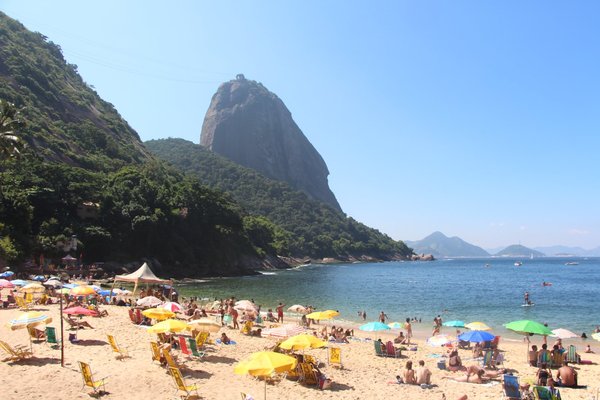Brazil
Rio de Janeiro
Rio de Janeiro, Carioca Landscapes between the Mountain and the Sea, covers an urban landscape shaped by its dramatic natural surroundings.
Rio’s natural landscape started to be altered in the 17th and 18th centuries to allow sugar and coffee growing. Its parks and gardens later became protected, and as such attributed to the outdoor living culture of the city. Guanabara Bay, Sugar Loaf and the statue of Christ the Redeemer have become global icons and an inspiration for artists.
Community Perspective: the magnificent views are its main drawcard. Be aware that the WHS boundary is actually pretty limited and excludes the majority of Rio’s built environment.
Site Info
Official Information
- Full Name
- Rio de Janeiro, Carioca Landscapes between the Mountain and the Sea (ID: 1100)
- Country
- Brazil
- Status
-
Inscribed 2012
Site history
History of Rio de Janeiro
- 2012: Advisory Body overruled
- ICOMOS advised referral
- 2012: Inscribed
- Inscribed
- 2003: Deferred
- On cultural criteria, to undertake an appraisal of the cultural values of Rio's setting
- 2003: Rejected
- On natural criteria
- Type
- Cultural
- Criteria
- v
- vi
Links
- UNESCO
- whc.unesco.org
- Official
-
- icmbio.gov.br — Tijuca National Park
- Related
-
- en.wikipedia.org — Rio de Janeiro Botanical Garden
- braziltravelinformation.com — Rio Travel Information
All Links
UNESCO.org
- whc.unesco.org — whc.unesco.org/
Official Website
- icmbio.gov.br — Tijuca National Park
Related Resources
- en.wikipedia.org — Rio de Janeiro Botanical Garden
- braziltravelinformation.com — Rio Travel Information
News Article
- May 28, 2024 bbc.com — Tijuca National Park: The fight to rewild the world's largest urban forest
- June 3, 2023 abcnews.go.com — Brazil's prosecutors block zipline construction at Rio's iconic Sugarloaf Mountain
- March 29, 2023 spectrumlocalnews.com — Residents protest zipline on Rio’s iconic Sugarloaf Mountain
- Jan. 18, 2014 nypost.com — Lightning breaks finger off Christ statue
- April 6, 2013 montrealgazette.com — German tourists robbed at Corcovado
Community Information
- Community Category
- Urban landscape: Latin American
- Cultural Landscape: Associative
Travel Information
Rio de Janeiro Hotspot
Recent Connections
-
Creative Cities
LiteratureSee www.unesco.org
-
Rubber
Botanical Gardens: João Barbosa Rodrigu… -
Reclaimed land
"as well as the extensive designed land…
Connections of Rio de Janeiro
- Individual People
-
-
Mapped or Illustrated by Blaeu
On top frieze of "Americae nova tabula" (1617)See luna.folger.edu
-
- Geography
-
-
Atlantic Ocean
Rio de Janeiro is on the far western part of a strip of Brazil's Atlantic coast (wiki)
-
- Trivia
-
-
Olympic Venues
Men's Cycling Race - Rio de Janeiro 2016: The last half of the race featured three summits through the Serra de Carioca of Tijuca National Park and past the Jardim Botânico as part of the Vista Chinesa Circuit -
Pareidolia
Pedra da Gavea - Differential weathering on one side of the rock has created what is described as a stylized human face. Markings on another face of the rock have been described as an inscription (wiki)See en.wikipedia.org
-
Built or owned by French
Christ the Redeemer: sculpted by French artist Paul Landowsky.See en.wikipedia.org
-
Built or owned by Portuguese
The Niteroi forts of Fortaleza de Sta Cruz, Forte Sao Joao, Pico Fort, Imbao Fort - "There is a group of Portuguese forts on Niteroi (AB) -
Cultural sites taking up an entire island
The inscribed area of Rio contains 2 islands fully within it: a. Ilha da Laje (or "Slab" island) b. Ilha de Cotunduba -
Depicted in the Ravensburger World Wide Series
Sugarloaf including Corcovado peak in the Rio edition -
Built or owned by Poles
Christ the Redeemer statue was made by the Polish-French monument sculptor Paul LandowskiSee en.wikipedia.org
-
In Video Games
Call of Duty: Modern Warfare 2 - Sugarloaf; Civilization VI: Christ the Redeemer statue
-
- History
-
-
Located in a Former Capital
The city was the capital of Brazil for nearly two centuries, from 1763 to 1815 during the Portuguese colonial era, 1815 to 1821 as the capital of the United Kingdom of Portugal, Brazil and Algarves, and 1822 to 1960 as an independent nation (wiki) -
Contains significant structures from the 20th Century
Christ the Redeemer (1931)
-
- Ecology
-
-
Granite rock formations
The peak of Corcovado is a big granite dome -
Inselbergs
Sugarloaf mountainSee en.wikipedia.org
-
- Architecture
-
-
Designed by or influenced Le Corbusier
Le Corbusier visited in 1929 during a tour of several cities in the Americas by air. He was particularly taken by the new ideas gained from "aerial vision" and produced an outline design for the city which incorporated Sugar loaf/ Corcovado etc. His vision is presented from around minute 10 of this videoSee www.youtube.com
-
Art Deco
Christ the Redeemer - considered the largest Art Deco statue in the world (wiki)See en.wikipedia.org
-
Designed by Paul Landowski
"Landowski is widely known for the 1931 Christ the Redeemer statue in Rio de Janeiro, Brazil, a collaboration with civil engineer Heitor da Silva Costa and architect and sculptor Gheorghe Leonida. Some sources indicate Landowski designed Christ's head and hands, but it was Leonida who created the head when asked by Landowski." (wiki) -
Reinforced Concrete
made of reinforced concrete and soapstone (wiki)See en.wikipedia.org
-
- Human Activity
-
-
Sugar
sugar plantations on the Tijuca (middle 17th century) -
Reclaimed land
"as well as the extensive designed landscapes on reclaimed land along Copacabana Bay" (OUV Brief synthesis) -
Coffee
Coffee cultivation on the Tijuca (18th century) -
Rubber
Botanical Gardens: João Barbosa Rodrigues was director of the gardens from 1890-1909. He specialised in the study of indigenous tribes and their harvesting and use of rubber. "As rubber became Brazil’s primary export product, the rubber trees began to wither in the fields, threatening latex production capacity. The old extraction method was questioned and cultivation of Hevea became more attractive. Nevertheless, in Brazil extraction was still seen as the most viable way to collect latex on a large scale and move it quickly to port. In 1881 in the Rio de Janeiro Botanic Garden, João Barbosa Rodrigues took the initiative to plant rubber trees. His tests established that Hevea brasiliensis was the variety best suited to latex" (in the ed endemic blight prevented Brazil from establishing a a Rubber plantation system).
-
- Constructions
-
-
Tomb of the Unknown soldier
Flamengo Park. SeeSee en.wikipedia.org
-
Railways
Corcovado Rack RailwaySee en.wikipedia.org
-
Prison
Fortaleza de Sta Cruz. Used as a prison during the 19th C particularly for political prisoners. -
Suspended cable cars
Sugarloaf Cable Car rises to the summit of Sugarloaf Mountain via 2 parts / 1912 / 1450m, 3 mins / Opened in 1912, it was only the third cableway to be built in the world. The cable car was the setting for the 1979 James Bond film Moonraker (wiki)See en.wikipedia.org
-
- WHS on Other Lists
-
-
Creative Cities
LiteratureSee www.unesco.org
-
New Seven Wonders of the World
Christ the Redeemer statue -
IUGS Geological Heritage Sites
The Sugar Loaf monolith of Rio de Janeiro
-
- Timeline
-
-
Built in the 16th century
The first European settlement, Rio, was founded at the foot of Sugar Loaf in 1565. (AB ev)
-
- WHS Hotspots
-
-
Rio de Janeiro Hotspot
Cultural landscape that includes Corcovado (with Christ the Redeemer), Sugar Loaf, and Copacabana beach
-
- Science and Technology
-
-
Botanical Gardens
include the Botanical Gardens, established in 1808
-
- WHS Names
-
-
Misleading WHS Names
The majority of Rio’s built environment is excluded - the core zone is limited to natural elements that have seen human intervention, resulting in a 'cultural landscape'. The flowery subtitle 'Carioca Landscapes between the Mountain and the Sea' isn't of help. An alternative name could be like 'Cultural landscape of Tijuca National Park and the Sugarloaf Mountain'. -
Epic Subtitles
Carioca Landscapes between the Mountain and the Sea
-
- Literature & Film
-
-
In The Simpsons
“Blame It on Lisa” (2002) -
Marvel Cinematic Universe
The Incredible Hulk; filming took place at the Taunay waterfall in the Tijuca National Forest, filling in for the jungles of Guatemala, where Bruce Banner finds himself after having transformed back from the Hulk -
Featured in the Go Jetters
Series 1: Episode 29: Rio de Janeiro -
James Bond in Movies
Moonraker (1979) (Sugarloaf mountain and Christ the Redeemer Statue) -
Location for a classic movie
Christ the Redeemer: As early as the 1940s, Hollywood captured the structure's iconic appeal in such cinematic vehicles as the 1942 Bette Davis film Now, Voyager and Alfred Hitchcock's 1946 film Notorious starring Ingrid Bergman. (wiki) + That Man from Rio (French adventure film 1964) -
In a Hitchcock movie
Christ the Redeemer: As early as the 1940s, Hollywood captured the structure's iconic appeal in such cinematic vehicles as Alfred Hitchcock's 1946 film Notorious starring Ingrid Bergman. (wiki)
-
News
- bbc.com 05/28/2024
- Tijuca National Park: The fight to…
- abcnews.go.com 06/03/2023
- Brazil's prosecutors block zipline…
- spectrumlocalnews.com 03/29/2023
- Residents protest zipline on Rio’s…
Recent Visitors
Visitors of Rio de Janeiro
- Adrian Turtschi
- aj
- Alberto Rodriguez Gutierrez
- Alejandro Lau
- alex
- Alexander Barabanov
- Alexander Lehmann
- Alex Marcean
- Ali Zingstra
- Aljaz
- Allegrazwindow
- ALS
- Alvaro1404
- A. Mehmet Haksever
- Ammon Watkins
- Andrea Szabo
- Andrew0181
- Angela Vandyck
- Artsybrea
- ashombob
- Aspasia
- Atila Ege
- Bill Maurmann
- bogbb
- Bram de Bruin
- brendairala
- campmany
- Carlo Medina
- Carlo Sarion
- Carlos Sotelo
- CeeMon
- Chinmaya
- chiuliqi
- Christine
- Christoph
- Christravelblog
- Cirene Moraes
- Colossus
- Crinion
- Csaba Nováczky
- ctravel
- Cyberczar
- CynthiaSam
- Daniela Hohmann
- Daniel Chazad
- Danieljbromberg
- dave wood
- David Aaronson
- Deffra
- Delphine Delaunay
- Dennis Nicklaus
- Dorejd
- Doubanjiang
- edstar500
- Elaine McArdle
- Elf21
- Els Slots
- emvcaest
- Erfe91
- Eric Lurio
- Erik Jelinek
- Eva Kisgyorgy
- Fan Yibo
- fedemarch92
- Felicité
- Fernweh
- Fmaiolo@yahoo.com
- Frédéric M
- GabLabCebu
- George Gdanski
- Gernot
- Gilles
- giloudepuertorico
- Gjert
- Hammeel
- Harald T.
- Harry Mitsidis
- H Beswick
- headventure
- hotpickle
- Hunstow
- Hurrvinek
- Iain Jackson
- Ian Cade
- IreneKD
- janis
- Janos
- Jan Zimmermann
- Jarek Pokrzywnicki
- Javier
- Jens
- JL
- João Aender
- Joel on the Road
- Jonas Martinsson
- Jon Eshuijs
- Jon Opol
- JR's HERITAGE SITES
- Justin
- Karito Vies
- KateY
- KeithBailey
- kelseyyurek
- Ken DJ
- Kevin247
- Kevin Padley-Knight
- kiank37
- Kjlauer
- Krijn
- Kurt Lauer
- La Concy
- Lameduck99
- Liamps91
- lindaann
- Linz
- Little Lauren Travels
- Loic Pedras
- Lucio
- Luis Filipe Gaspar
- Lukasz Palczewski
- lynnz317@aol.com
- Maciej Gil
- Malgorzata Kopczynska
- manuel011197
- Mariam
- maryhattie
- Matthewsharris
- Michael Ayers
- Michael Novins
- Michael Turtle
- Mihai Dascalu
- Mikko
- Milan Jirasek
- MMM
- Monica Tasciotti
- montgomw
- Morodhi
- Mstrebl1990
- Niall Sclater
- Nihal Ege
- Olli-Pekka Turunen
- Pat Martin
- Patrik
- Paul Schofield
- Pchxiao
- PeterA
- Philipp Leu
- Philipp Peterer
- phillipmeng
- Pieter Dijkshoorn
- Pink Bunny
- Piotr Wasil
- Pradip Tripathy
- Priyaranjan Mohapatra
- puessergio
- Rafabram
- Ralf Regele
- Reiseblitz
- Reisedachs
- Reza
- rivr
- Rodinia
- Roger Ourset
- Roman Bruehwiler
- RYU
- sandersx2
- Sandra!
- S. Anril Tiatco
- saraleonela
- Sclowitz
- Sergio Arjona
- Shandos Cleaver
- Shombob
- sibariam
- Slavi
- Solivagant
- Ssong.x
- Stanislaw Warwas
- stephanvermeulen
- Szabolcs Mosonyi
- Szucs Tamas
- Tarquinio_Superbo
- Tevity
- Thomas Buechler
- Thomas van der Walt
- Tim Allen
- TimPick
- Vanessa Buechler
- Van Hung
- Vernon Prieto
- Walter
- Weecheng
- Wojciech Fedoruk
- Xiquinho Silva
- Yi Han Goh
- Yongcheng Liu
- zfish
- Zhenjun Liu
- Zoë Sheng
Community Reviews
Show full reviews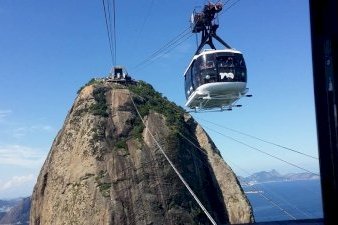
WHS#25
Oh, Rio...
I don't really know what to make of this WHS. Now don't get me wrong, I love Rio de Janeiro as much as anyone else. Yes, my visit, like my entire visit to Brazil, was a bit too short to soak everything in, so the experience would've definitely benefited from a longer stay. But I really truly don't understand the OUV of a cultural site like this. Cultural landscapes are one thing; iconic landscapes are another. I feel like Rio's natural landmarks fall under the latter more than the former, and to me, that makes for a weak, if not nonexistent, OUV. Sure, every iconic place is iconic for a reason, but not all of these reasons may be a reason to become a WHS. Niagara is a pretty iconic waterfall, but it sure doesn't hold the natural values that Iguazu or Victoria Falls do. Hollywood is one of the most iconic urban areas thanks to modern performing arts, but we aren't gonna see it on this website anytime soon (except Frank Lloyd Wright's work there, of course, and for completely different reasons). While Rio is certainly one of the most scenic cities in the world, it's not the only one. Capetown, Hong Kong, and La Paz may come to mind, and each of them had to find a way to fully utilize their land as well. In Capetown's case, its iconic natural landmark, Table Mountain, is now WHS, on its own natural merit. The …
Keep reading 0 comments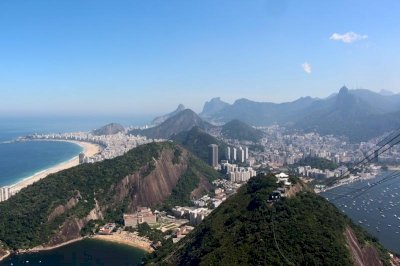
Rio is one of these WHS I visually absolutely enjoy, but it is not really clear to me where the UOV lies. However, I enjoyed my visit and was happy that I could combine visiting a new WHS and completing my minor travel goal to visit all New 7 Wonders. The other reviews covered the most important points, so I will concentrate on how to get to the parts of the WHS I visited.
In general I walked a lot. There are “walk Rio” sign posts all around the city and it’s sufficiently marked where to go to get to the next stop. I never felt unsafe and hat no problem using my big camera and my mobile phone in public. After covering Valango Wharf and 2 TWHS on foot in down town, I took the metro to Copacabana. I got off at Cantagalo station and walked the few minutes to the beach. Copacabana is by far the part of the town, where I saw most foreigners and it doesn’t feel like a WHS at all. I still enjoyed walking in the warm water and moved towards the Sugar Loaf for around 1km. I left the beach at the Hilton and walked to the funicular station of the Sugar Loaf. Takes around 45mins and you will cross a tunnel on the way. I arrived at the funicular station around noon. Strangely I was much faster without online reservation. While those who reserved a ticket online were waiting in a …
Keep reading 0 comments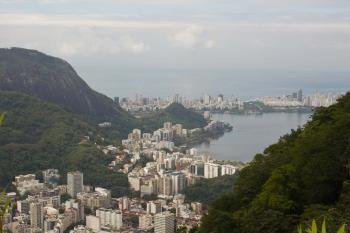
The issue I have with this site is that it's never really clear when you're actually in a World Heritage area - the designated spots are not distinct enough from the rest of the city. You don't really need to do anything special to see the WHS areas - any normal tourist will go to at least a couple of them. And I don't really see their significance.
Still, Rio is a fascinating city and certainly worth visiting. You'll never regret going if you haven't been before!
Keep reading 0 comments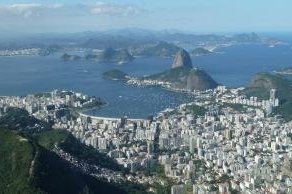
As far as arrivals go, not many places are going to top Rio. Our morning flight from Belo Horrizonte brought us over Rio’s incredible cityscape , nestled in amongst rainforest clad rounded peaks. My wife and I were clamouring over the window for our first glimpse of Christ the Redeemer, the Maracana, and Copacabana beach. Our descent into Santos Dumont airport was completed by a dramatic turn in front of Sugar Loaf Mountain. It was an incredible introduction to a unique city.
The world heritage site boundary is actually pretty limited. It excludes the majority of Rio’s built environment, which is covered separately by the four tentative sites that are scattered over a small area in the city centre. As such the outstanding universal value of this cultural landscape lies mainly in its natural features.
Given the limited boundary, it wasn't until late on our second day of touring that we entered the core part of the world heritage site. This was when we went for an evening stroll around the pleasant suburb of Urca, which is tucked up against Sugar Loaf Mountain. The seafront wall provided a nice place to join the locals while watching the sunset, the planes circle, and kids play beach football.
The unique urban landscape meant there were endless times when the best thing to do was gawp at the magnificent views. The best are from Copacabana Fort, from Niemeyer's Niteroi art centre back across the bay, the brooding monoliths that dominate the beaches of …
Keep reading 0 comments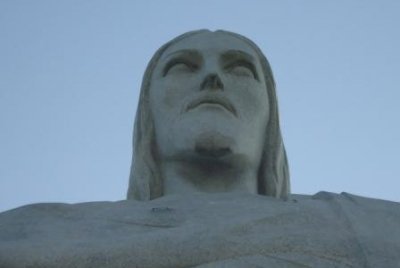
Just visited (March 2013). I have some mixed feelings connected with Rio's nomination. First of all it is one of those places that don't need UNESCO status to be visited. There are not many other big cities in the world with so remarkable lanscape / location. Truely one of world wonders.
But if we see what was really iscribed these are just parts of the city mostly rainforest located inside the town but inscribed as cultural landscape. Little bit strange. Of course Christ on the top of Corcovado is amazing together with Sugar Loaf (in this case is just a huge rock) and less known Botanical Garden (one of the best I have ever been) but other areas were a little bit dissapointing (dirty Copacabana surrounded by modern buildings, similar Botafogo beach - part of Guanabara Bay). Apart from those top atractions there are just modern buildings although perfectly located
Keep reading 0 comments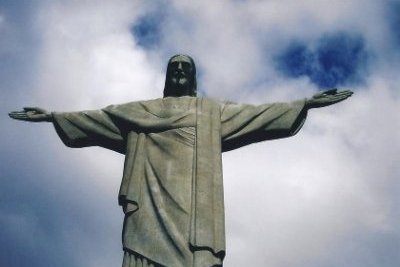
My visit to Rio de Janeiro was a short one, and I was rained out on the first day.
The next morning it was more or less dry. By bus, I went to the Pão de Açúcar (Sugar Loaf). This is the most prominent hill in the landscape of Rio. You get to the top via two cable cars. There may have been 75 people inside and it was pretty busy. At the halfway stop I found the most beautiful: the views of the beaches and the Sugarloaf itself.
A day later the sun was shining again. So a quick taxi ride brought me to the Corcovado, the mountain with the well-known Christ statue. It is reached by a little train, a tourist attraction by itself in Rio. What I found striking was the number of people engaged in the train. It looked like an employment project for the local youth. The train ride took about 20 minutes, passing through the Atlantic rainforest of the Tijuca National Park. A beautiful ride. Up near the statue, there's a beautiful view of the city.
Back at the bottom again I visited the Museum of Naive Art. Definitely worth it, with paintings of Rio and the history of Brazil on show.
Keep reading 0 comments
